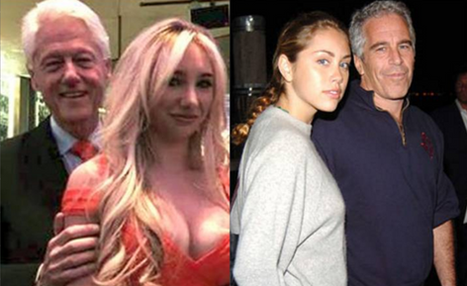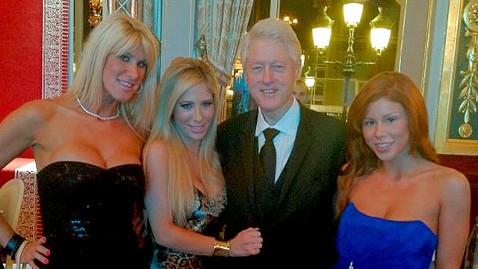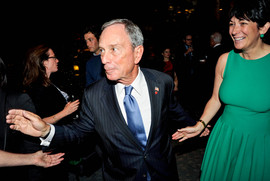Official Denials Are the New Omertà: Epstein, the Deep State, and the Silent RICO
- Rob Gray

- Jul 7
- 8 min read

When they say “nothing to see here,” remember: silence was the Mafia’s greatest weapon too. From omertà to Epstein, the real secrets hide behind official denials. History shows the loudest cover-ups protect the deepest corruption.

America loves its organized crime stories, but only when they feel safely in the past — the Mob bosses in fedoras, the goodfellas sipping espresso in Little Italy, the swaggering kingpins who lived like medieval princes. We see their mugshots today, yellowed and pinned to corkboards in true crime shows, as if the system that made them possible could never return.

But organized crime didn’t vanish. It evolved. And the tools we once used to cut out its cancerous root remain on the books, as sharp as ever, waiting for the next patient.
The strongest of those tools is RICO — the Racketeer Influenced and Corrupt Organizations Act, passed in 1970 and still the ultimate scalpel for dismantling entire networks of corruption. It’s not about catching one dirty actor; it’s about exposing the entire system that protects, funds, and insulates that actor, no matter how many layers deep they’re buried.
So when someone shrugs off the question, “Where’s the Epstein list?” or tells you with lawyerly finality, “He killed himself, there’s nothing left to talk about,” pause. Because the real history of RICO shows the work happens precisely when it seems the quietest.
RICO 101: The Law That Could Kill a King
The Mafia’s power in America didn’t come from violence alone. It came from structure. Small crews did the dirty work, mid-level captains ran crews, and at the top sat the bosses and the so-called “Commission” — a shadow board of directors that made the Mafia function like a Fortune 500 company, complete with rules, alliances, and death sentences for those who broke the code.

Before RICO, the FBI’s biggest challenge was simple: you could catch a soldier with drugs or a gun, but proving the boss had anything to do with it was like chasing smoke. Everything filtered up through layers of loyalty and plausible deniability. Courtrooms filled with loyal made men who’d rather do a decade in prison than break omertà.
RICO changed the game overnight. Suddenly, prosecutors could argue that the Mafia wasn’t just a collection of criminals — it was a single, continuing criminal enterprise. Under RICO’s terms, all they needed to prove was:
the existence of that enterprise,
that the defendants committed at least two related crimes in furtherance of it,
and that they did so knowingly.
That meant the boss at the top could get life for murders or drug deals he never directly touched, as long as those crimes could be tied to the enterprise he ran. It was a legal revolution — one so threatening that mob lawyers fought it bitterly in court for years.
📜 Footnote: The landmark Supreme Court case United States v. Turkette (1981) cemented RICO’s power, ruling that it could be used not just for infiltrated legitimate businesses but for purely criminal organizations like the Mafia. [1]
Silence Is Everything: Why Secrecy Is the Lifeblood of RICO
So why is secrecy so critical for a RICO case? Because you’re not just charging people for one crime. You’re building a map of an entire hidden world. You need wiretaps in offices. You need informants who’ve flipped. You need undercover agents to burrow in deep, gathering names, payoffs, codes, schedules - the small details that prosecutors can later use to prove that multiple acts connect back to the same enterprise.

If a single clue leaks - if a rumor spreads through the underworld - the entire web can dissolve overnight. Witnesses vanish or die. Money pipelines close. Conversations go silent.
That’s why the FBI’s greatest hits under RICO - the operations that gutted the Mob’s power - were all built like sealed vaults. The public never saw the work until the day of the takedown. And the bosses? They were always the last to know.

Case Study 1: 🍕 The Pizza Connection Case (1979–1987)
To see how quietly the biggest conspiracies unravel, look no further than the Pizza Connection.
What it was: In the late 1970s, the Sicilian Mafia and American Cosa Nostra built an international heroin pipeline stretching from Turkey’s poppy fields to Sicily’s ports to the streets of New York, Chicago, and Midwestern towns. The twist? The final link was hidden in plain sight: small, family-run pizzerias. On the surface, they sold pepperoni pies and sodas. In the back, they moved hundreds of kilos of heroin and laundered tens of millions in dirty cash.

How the FBI did it:
The FBI and Italian authorities worked hand in glove, sharing wiretaps and smuggling intercepts.
They flipped key Sicilian smugglers and local pizza shop owners in the U.S., offering reduced sentences and witness protection in exchange for secrets.
For years, they tracked shipments through pizza parlors in New Jersey, New York, Illinois, and Wisconsin, mapping out where the drugs landed and how the money went back to Palermo.
Why secrecy mattered: This was the Mafia at its most transnational. The Sicilians used local families like the Gambinos and Bonannos to protect their network. If word got out that agents were onto the heroin route, the whole operation would vanish overnight — and the murders of informants would begin.
What happened: In 1985, 35 men were indicted under RICO. The trial lasted 17 months — the longest federal criminal trial ever at the time — and the evidence spanned thousands of wiretap pages, shipping invoices, and witness testimony from mafia defectors who stunned the old dons with their betrayal. It proved the Mafia wasn’t just about gambling and bookies; it was a truly international syndicate moving industrial-scale heroin through your local pizza joint.
📜 Footnote: See United States v. Badalamenti, the lead case in the Pizza Connection trial, which named Sicilian boss Gaetano Badalamenti as the mastermind. [2]

Case Study 2: The Commission Case (1985–1986)
The Pizza Connection proved the Mafia’s reach, but the Commission Case proved the bosses were vulnerable.
What it was: In New York, the heads of the Five Families met regularly as “The Commission.” This invisible council settled turf wars, approved murders, and brokered rackets in construction, trucking, and labor unions. For decades, everyone knew the Commission existed, but proving it in court was impossible.
How the FBI did it:
The FBI installed bugs in social clubs, restaurants, and private meeting spots. One famous bug was hidden in the ceiling of the Palma Boys Social Club, headquarters for Genovese boss Anthony “Fat Tony” Salerno.
They recruited mobsters who flipped when facing long sentences, including high-ranking captains who knew the meetings’ ins and outs.
They used undercover work from operations like Joe Pistone’s Donnie Brasco infiltration to build a broader picture of how the Commission enforced discipline across families.
Why secrecy mattered: The Commission bosses thought they were untouchable. They spoke in coded language — but they still spoke freely, believing no one would dare put a wiretap in their sanctuaries. If they’d known about the bugs, they would have changed their entire structure.
What happened: In 1985, U.S. Attorney Rudolph Giuliani unveiled charges against the Commission’s top men. By 1986, several bosses — including Lucchese boss Tony Corallo, Colombo boss Carmine Persico, and Genovese front boss Tony Salerno — were convicted under RICO and sentenced to a combined century in prison. The once-invincible council was decapitated.
📜 Footnote: See United States v. Salerno, sometimes called the “Commission Case,” which set the precedent for treating a criminal boardroom like a mob family enterprise. [3]

Case Study 3: 🎭 Donnie Brasco (1976–1981)
No discussion of RICO’s secret power is complete without Joe Pistone — the man who, for six years, lived as a mob associate under the name “Donnie Brasco.”

What it was: Pistone, an FBI agent, infiltrated the Bonanno Family by posing as a jewel thief. Over six years, he earned the trust of mid-level capos and soldiers, documenting hijackings, extortion, and the Mafia’s day-to-day “business” operations.
How the FBI did it:
Pistone lived the life 24/7, gathering evidence that the Bonannos were a continuing criminal enterprise.
His reports gave prosecutors what they needed to show structure — who reported to whom, how cash changed hands, and who gave the green light for killings.
When the operation ended, it exposed the family’s vulnerabilities and seeded later RICO cases.
Why secrecy mattered: If Pistone’s cover had been blown, he’d have ended up in the trunk of a car, just like so many other “rats.” His deep undercover work terrified the Mob. They realized for the first time that the FBI could plant someone in the middle of their rituals, ceremonies, and family secrets.
What happened: The Bonanno Family lost its seat on the Commission — a humiliation that shattered its credibility. Pistone’s evidence led to more than 200 indictments. Even decades later, his work shapes how the FBI teaches infiltration today.
📜 Footnote: See Pistone’s own memoir, Donnie Brasco: My Undercover Life in the Mafia, and the film adaptation starring Johnny Depp for pop culture context. [4]
Why This Matters Now: Silence Is the Real Story
When you understand how these cases worked, the “official stories” about modern scandals look different.
Consider Jeffrey Epstein. Here was a man with a private island wired for surveillance, a billionaire black book, and well-documented ties to intelligence services, royalty, presidents, and global business elites. His entire “business” relied on the same system the Mob perfected: layers of plausible deniability, bribes and favors, a code of silence for clients and victims alike.

Then he “killed himself” — conveniently before any larger network could be named in court.
Today, figures like Kash Patel, Dan Bongino, and Pam Bondi all parrot the same line: “No Epstein list. He killed himself. Nothing more to see here.” These are people who know how the intelligence community and federal prosecutions work. When they say there’s nothing to see, does it mean the case is dead — or that it’s alive in the darkness?

If you were building a RICO case that might reach into the very fabric of the political class, the media, and even the agencies charged with protecting the secrets, would you advertise it? Would you risk leaks that might tip off those still at large? Would you risk flipping a witness only for that witness to disappear, like so many mob informants did?
Or would you do what the FBI did in the old days: flip the weakest link, track the money, tap the phones, and wait?

Maybe There Is No List — Yet
RICO cases don’t happen overnight. The Pizza Connection investigation spanned nearly a decade. The Commission Case took years of wiretaps and flipped insiders. Donnie Brasco spent six years undercover just to build the foundation. These conspiracies survived for decades because people believed they were too big to fail, too protected to fall.
When the hammer finally dropped, it shocked the world.

Could a modern, transnational trafficking and blackmail operation — something far bigger than the Mob ever dreamed — be under that same kind of slow, suffocating squeeze right now? It’s not impossible. The same law is still on the books. The same tactics still work. And the same truth holds: the quiet moments are the ones when the biggest secrets are being put to work.

The Silence Between Headlines
We live in a world of noise, where pundits scream “case closed” as if their volume makes it true. But history whispers that the real conspiracies break when the targets feel safest.
Ask the Mafia bosses who ate veal parmigiana in their clubs, never knowing a bug sat above their heads. Ask the pizza shop owners who thought their extra “delivery” bags would never be traced back to Sicily. Ask the Bonanno wiseguys who drank coffee with a man they thought was family — until they realized he was a Fed in disguise.
So maybe there is no Epstein list. Or maybe there’s something bigger. Keep your eyes open. Ask better questions. The real show doesn’t happen in the headlines. It happens in the silence between them.
Footnotes
United States v. Turkette, 452 U.S. 576 (1981).
United States v. Badalamenti, 794 F.2d 821 (2d Cir. 1986).
United States v. Salerno, 481 U.S. 739 (1987).
Joe Pistone, Donnie Brasco: My Undercover Life in the Mafia, 1987.




























































Comments